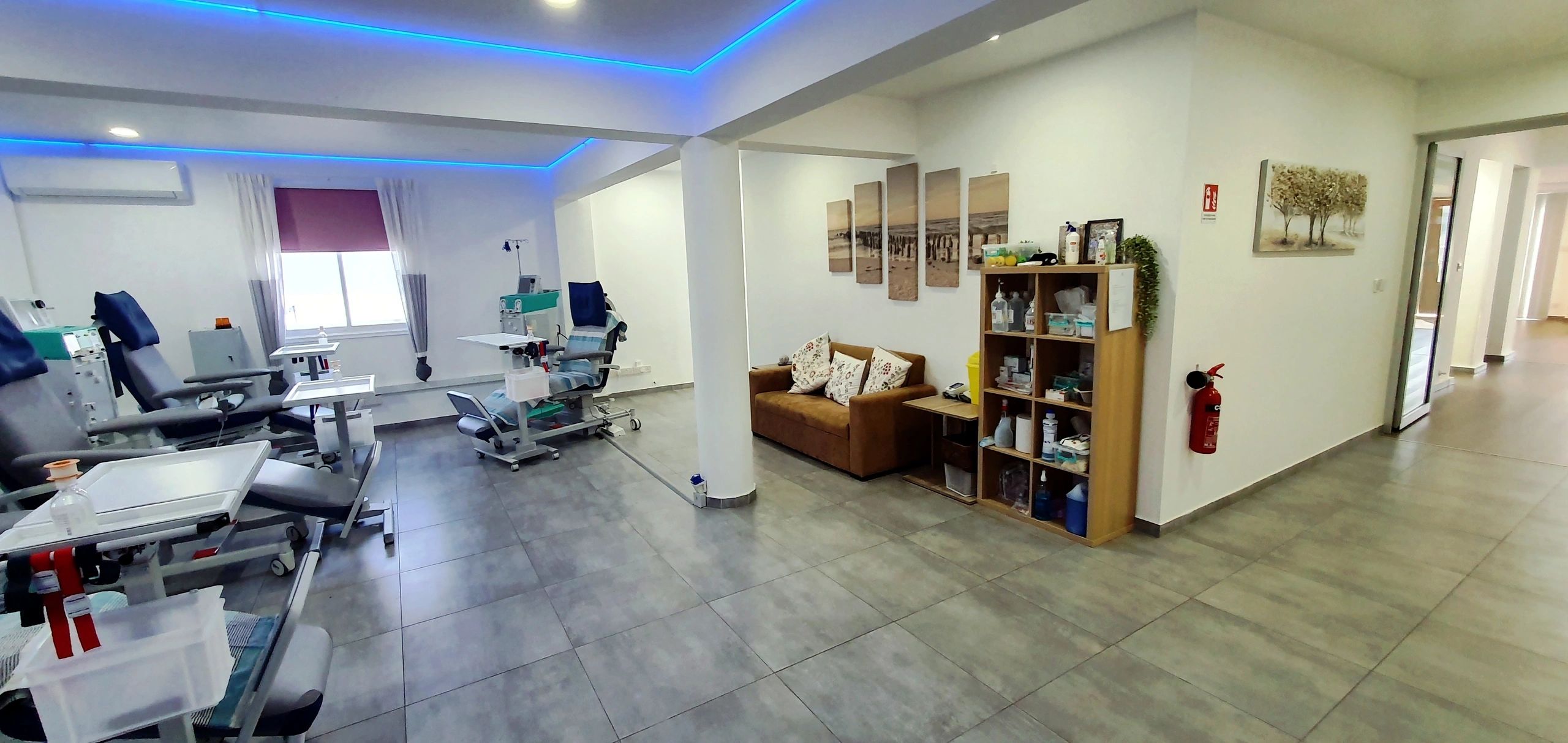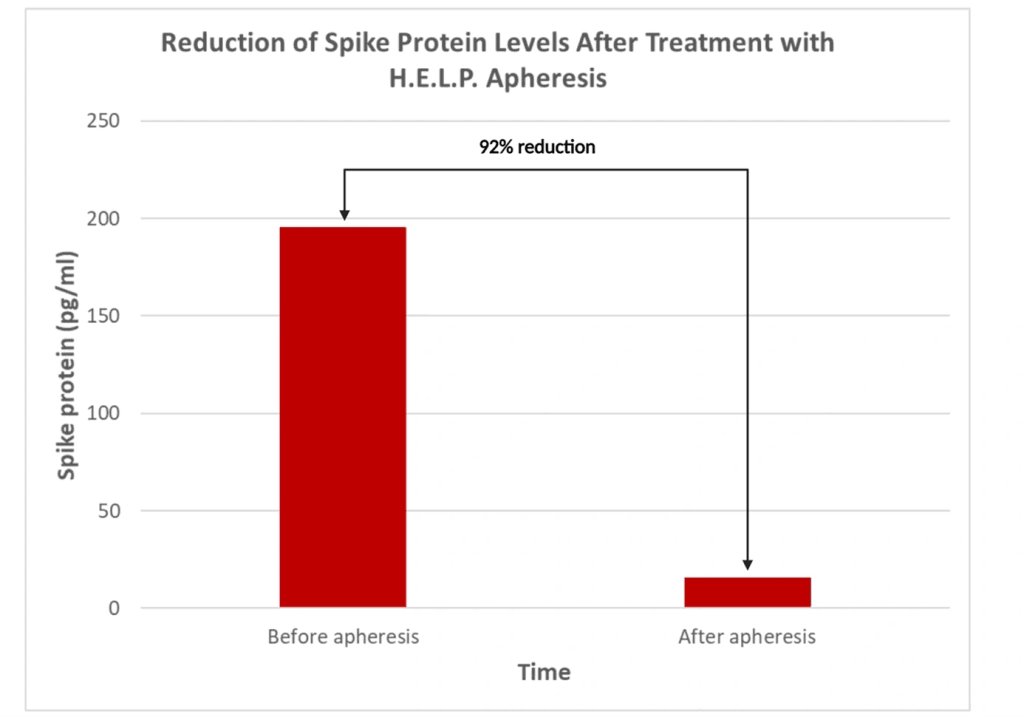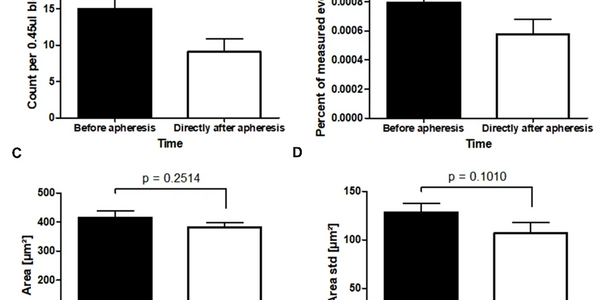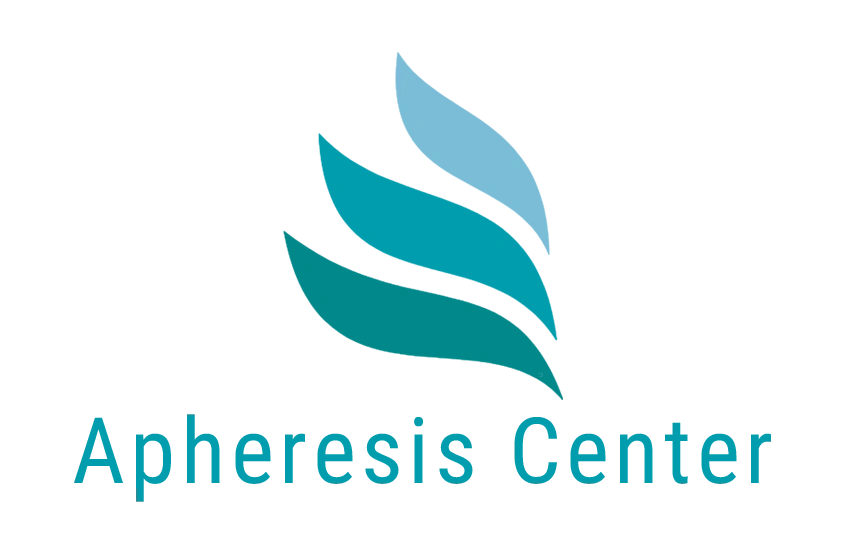
H.E.L.P. Apherese-Behandlung für Long Covid, Post-Vac-Syndrom und chronische Krankheiten
Was sind die Vorteile der H.E.L.P. Apherese für Long Covid?
H.E.L.P. (Heparin-induced Extracorporeal LDL Precipitation) Apheresis is an extracorporeal (=outside of the patient’s body) blood treatment that has been in use for over 40 years with great success. It was initially developed as a treatment for microcirculation and blood flow issues and excess cholesterol. The treatments biggest strength is to resolve microcirculation and blood flow disorders whilst at the same time removing hundreds of pathogens, inflammation proteins, viral persistence/spike proteins and cholesterol+autoantibodies from the blood.
Selected scientific sources and studies for H.E.L.P. Apheresis used in Long Covid/Post Vac and microcirculation/blood flow disorders in Long Covid as well as H.E.L.P. Apheresis resolving microcirculation and blood flow disorders:
- ISFA 2023 (Weltkonferenz der Internationalen Gesellschaft für Apherese)
- Gavin Infectious Diseases Diagnosis & Treatment
- Researchgate
- Springer
- Frontiers
- ScienceDirect
- Therapheutic Apheresis and Dialysis
- Journal of Thrombosis and Haemostasis
- Springer Nature
- The American Journal of Medicine
- PubMedCentral
- Science
‘During the H.E.L.P. Apheresis treatment numerous inflammatory mediators (CRP, cytokines, etc.) as well as any virus components/spike proteins present are filtered out. The cleaned blood is returned to the patient.
Bei Long-Covid-Patienten hat sich gezeigt, dass Microclots durch H.E.L.P. Apherese aufgelöst wird und dass das Spike-Protein durch Bindung an Heparin herausgefiltert wird. Die Anzahl der erforderlichen Apherese-Behandlungen variiert von Patient zu Patient und hängt auch von der Schwere der Symptome ab.
Microcirculation and blood flow disorders are an official indication of H.E.L.P. Apheresis.’
(Quelle: B.Braun Deutschland / B.Braun Schweiz)
Wie funktioniert die H.E.L.P. Apherese?
‘H.E.L.P. (heparin-induced extracorporeal LDL precipitation) apheresis is a treatment method that has been in use for decades and was initially developed as a treatment option for refractory lipid metabolism disorders. Over time, other medical indications were added that are a result of a microcirculation and blood flow disorder, such as idiopathic hearing loss and dry macular degeneration as well as Multiple Sclerosis.
During the H.E.L.P. procedure, the plasma is first of all separated from the other components that make up the blood. Heparin and an acetate buffer are then added, which lower the plasma’s pH. This changes the surface charge of LDL-C, Lp(a) and other substances, which leads to increased binding to the heparin used. In addition to LDL, the process also filters out various inflammatory mediators (CRP, cytokines, etc.) as well as any virus components or spike proteins present. The resulting precipitates are filtered out and subsequently removed from the plasma in circulation through the machine.’
‘The excess heparin is eliminated by adsorption. The physiologic pH is then restored by removing the buffer solution via dialysis. Finally, the purified blood is returned to the patient at the end of the treatment.
Nach neueren Erkenntnissen kann die vermutete Bildung von Microclots in Blutproben von Gesunden durch Zugabe von Spike-Protein unter dem Mikroskop sichtbar gemacht werden. Bei Long-Covid-Patienten wurde bereits gezeigt, dass diese Microclots durch H.E.L.P. Apherese aufgelöst werden und das Spike-Protein durch Bindung an Heparin herausgefiltert wird.
The number of rounds of apheresis required varies from patient to patient and also depends on the severity of the symptoms.’
Quelle: B.Braun
Help Apherese entfernt/adsorbiert die folgenden Substanzen aus dem Blut:
- Fibrinogen, andere Gerinnungsfaktoren und Microclots (dies erhöht die Mikrozirkulation um 20% und befreit die kleinen Blutgefäße, während die Blutviskosität um etwa 10% reduziert wird)
- Entzündungsmodulatoren/Proteine wie CRP, Zytokine und Chemokine (die Entzündungen reduzieren)
- SarsCov2-Viren und Spike-Proteine/Fragmente (durch Bindung an das verwendete Heparin)
- Hunderte von Krankheitserregern auf Proteinbasis
- LDL- und Lp(a)-Cholesterin (verbessert die Endothelfunktion und die Fibrinolyse) + daran gebundene Autoantikörper
Unsere vollständige Präsentation über H.E.L.P. Apherese und Kombinationstherapie finden Sie hier:
Weitere Informationen über den Erfinder der H.E.L.P. Apherese, Prof. Dr. med. Dr. h. c. Dietrich Seidel, finden Sie hier. Dr. h. c. Dietrich Seidel, finden Sie hier:
You will find extensive information on our blog post about different types of Apheresis and which type is suitable for which purpose HERE
Reduktion von SarsCov2-Spike-Protein durch H.E.L.P. Apherese

Verringerung der Spike-Protein-Spiegel (pg/ml) nach Behandlung mit H.E.L.P. Apheresis. Es wurde eine 92%ige Verringerung des Spike-Proteins beobachtet.(Quelle: State of the Art H.E.L.P. Apheresis: Fortschritte bei der Behandlung von Covid-19, Long Covid und Post-Covid-19-Impfsyndrom)
Reduktion von Microclots durch H.E.L.P. Apherese

Analysis of microclot-like structures from RT-DC measurements of 0.45 µl of whole blood. A-D. Bar plots of n = 16 patients (repeat samples were not received for three patients). A. Count of microclot-like structures per 0.45 µl of blood. B. Microclot-like structures expressed as a percentage of all measured events (blood cells and cell agglomerates). C. Projected area (µm²) of microclot-like structures. D. Standard deviation of the projected area (µm²) of microclot-like structures. (Source: State of the Art H.E.L.P. Apheresis: Advances in Management of COVID-19, Long COVID, and Post-COVID-19 Vaccination Syndrome)
Part One: Microclots inside of human blood vessels – graphic animation and explanation
Microclots, Überaktivierte Blutplättchen, Endothelschäden und Entzündungen bei Long Covid, Post Vac Syndrom und chronischen Krankheiten. Quelle: cgtn.com
FAQ – Frequently Asked Questions
Please email us at info@apheresiscenter.eu if you cannot find an answer to your question
Selected scientific sources and studies for H.E.L.P. Apheresis used in Long Covid/Post Vac and microcirculation/blood flow disorders in Long Covid as well as H.E.L.P. Apheresis resolving microcirculation and blood flow disorders:
ISFA 2023 (International Society for Apheresis World Conference)
Gavin Infectious Diseases Diagnosis & Treatment
Researchgate
Springer
Frontiers
ScienceDirect
Therapheutic Apheresis and Dialysis
Journal of Thrombosis and Haemostasis
Springer Nature
The American Journal of Medicine
PubMedCentral
Science
A collection of sources which have published success rates can be found at the Long Covid Apheresis Community (LCA Community): https://lcacommunity.org/research
The results published by the LCA Community have been confirmed at the ISFA2023:
ISFA 2023 (International Society for Apheresis World Conference)
You will find extensive information on our blog post about different types of Apheresis and which type is suitable for which purpose HERE
Apheresis means ‘separation/extraction’: A separation of the big blood parts (white and red blood cells and blood platelets) from the rest of the blood (plasma) and extraction of pathogens.
But that is where the similarities of HE.L.P. Apheresis with ANY OTHER type of apheresis end.
H.E.L.P. Apheresis is in fact a ‘live laboratory process’ in a machine circuit.
Unlike any other form of apheresis it uses 400.000 units of heparin (heparan sulfate to be exact) in the extracorporeal machine circuit and it turns the blood plasma temporarily acidic to ensure the highest technically possible levels of selective pathogen adsorption in that environment. For one H.E.L.P. apheresis session 30 kilogram of one-use parts are used.
H.E.L.P. Apheresis is the ONLY type of apheresis specifically designed to resolve coagulation issues and interfere into the coagulation cascade. It increases microcirculation (blood flow in the small capillaries/blood vessels) by 20% whilst reducing the viscosity of the blood by 10% per session.
It is a highly selective (by means of adsorption – heparin precipitation) form of apheresis and has higher adsorption rates than any other form of apheresis. It does NOT use filtration (which is non-selective) but it uses adsorption/precipitation – this means it only takes out the pathogens (viruses/viral spike, bacteria, fungus, inflammation proteins, cholesterol+autoantibodies and hundreds of pathogens more) but leaves all other substances in the blood – hormones, messengers etc.
H.E.L.P. Apheresis has been successfully applied for:
– Long Covid
– Post Vac Syndrome / Vaccine Injury
– ME/CFS
– Lyme
– Fibromyalgia
– Multiple Sclerosis
– Lupus
– Other illnesses where microcirculation issues/blood flow issues, viral or bacterial persistence, inflammation proteins, cholesterol+autoantibodies or toxins/pathogens are present
Erfüllt ein Patient die Voraussetzungen (diese werden durch einen Fragebogen abgeklärt), findet ein ausführliches Patientengespräch und Assessment statt. Ziel ist es, den Schweregrad der Symptome zu ermitteln und zu klären, ob die Voraussetzungen für die Anwendung der H.E.L.P. Apherese im Sinne des Verwendungszwecks des Plasmat Futura Gerätes gegeben sind.
Die Kosten von derzeit 1685 Euro pro Behandlung werden vom Patienten selbst getragen. Selbstverständlich kann der Patient die Kostenübernahme individuell bei seiner Krankenkasse beantragen.
H.E.L.P. apheresis is recognised in the EU and Switzerland for the indication of microcirculation and blood flow disorders and several other indications. The Plasmat Futura machines used for H.E.L.P. are EMA licensed and CE certified. Clinical studies for H.E.L.P. Apheresis in Long Covid have been published:
Pub Med Central
Gavin Publishers
The symptoms of Long Covid are enormously varied. Any organ system can be affected. Treatments carried out so far suggest that many of these symptoms can be successfully treated by improving microcirculation/blood flow. The amount of treatments needed is individual (we see in average 5-6 H.E.L.P. treatments over the last years per patient). Whilst the content of the precipitation filter and heparin adsorber are not always helpful to identify if further treatments are meaningful, the latest study has shown that venous oxygen measurement is of great help for better treatment direction.
H.E.L.P. apheresis is generally very well tolerated and has few complications. As with any treatment, there are risks and side effects. However, these are very rare and easy to control. For example, there may be haematomas at the injection sites, a short-term so-called vasovagal reaction or temporary fatigue. From the 500.000 treatments undertaken in the last 30 years, over 200.000 have been scientifically documented – this makes H.E.L.P. one of the best researched and safest treatments there is.
Since 2023 we do offer Triple Anticoagulation Therapy for microcirculation and hyper-coagulation issues, but only under certain circumstances. The Triple Therapy needs constant monitoring of the blood to minimize the risk of (brain and gut) bleeding. A physical presence of the patient at the clinic of 3-4 months is therefore necessary. The often strong side effects from toxins and pathogens being released into the blood of the patient need to be controlled with steroids and antihistamines. We follow the original protocol that was published by Dr. Jaco Laubscher.
The differences between H.E.L.P. Apheresis and Triple Anticoagulation Therapy:
– If your local GP/PCP supports you and takes on the responsibility of constantly monitoring your blood while you are administered a combination of three anticoagulant medications at once (bleeding risk), the costs are lower than H.E.L.P. and you do not need to be present at the clinic for 3-4 months
– Patients often do suffer from constant side-effects of the Triple Therapy from toxins and pathogens being released into the blood. Steroids and antihistamines are a way to reduce them
– H.E.L.P. Apheresis has a higher safety profile with over 30 years of scientific data behind it
– H.E.L.P. Apheresis does not only remove the microclots from the blood but also does remove inflammation, viral spike protein, cholesterol+autoantibodies and hundreds of pathogens and furthermore it reduces the viscosity of the blood around 10% per treatment and increases the microcirculation by 20% in total.
We do only recommend Triple Anticoagulation Therapy in first 6 months after infection/onset and/or if your local GP/PCP supports and monitors it.
From our clinical experience H.E.L.P. Apheresis as part of the Combination Therapy is preferable and shows better results. The individually adapted Combination Therapy often does include anticoagulation and fibrinolytic protocols.
In Triple Therapy the body needs to deal with all the toxins and pathogens released from the microclots. Through H.E.L.P. Apheresis all toxins and pathogens are taken out of the blood by the apheresis machine and it furthermore does not only get rid of the microclots but does additionally remove inflammation proteins, viral spike protein, cholesterol+autoantibodies and hundreds of pathogens and reduces the viscosity of the blood around 10% per treatment whilst increasing the microcirculation by 20% in total. This means it has several modes of action instead of just a single mode like triple therapy.
Advantages:
– No stinging with needles required (sometimes with Long Covid damaged veins several tries with the needles despite ultrasound are needed, sometimes there can’t be any proper blood flow established, sometimes veins shrink under stress or from a bradykinin shock)
– No constant kneading of therapy/stress ball to maintain blood circulation at needed level needed (ideal if you have fatigue)
– No constant visibility of blood/needles (good if you have anxiety/fear of needles and blood)
– You don’t need to keep your arms with needles inside still for hours
– No risk of penetrating the backside of the vein if you accidentally lift your arms
– You can sleep during treatment
– You can go to toilet during treatment
– You don’t have to get needles placed for every treatment
– The blood flow volume is higher – 20% more efficiency, higher amount of plasma treated, shorter treatment duration, less burden on the body
– You can eat and watch a movie or even work on the laptop during treatment – your hands are free
– In case of low blood flow the catheter is closer at the bodies center (upper leg) that enables treatment even with lower blood pressure
– works as constant reminder so you will pace much better
Disadvantages:
– Cost of 1000 to 1100 Euros (depending on the size/make of the catheter – this ‘pays for itself’ after 4-5 treatments as with catheters in average 20-25% more plasma volume can be processed and the constant flow speed technically leads to a higher adsorption rate)
– Can feel inconvenient at times
– Restricted movement (max. a few hundred meters radius a day or less is recommended to avoid irritation of the vein) – but many patients reported in return it helped to pace well
– Medical risks: 4 in 100.000 will suffer from nerve damage/irritation next to the vein when the catheter is placed and the risk of clotting is increased (which can be minimized by the anticoagulants being administered and by not moving too much). In rare cases the exit point can get inflamed and antibiotics need to be administered, waterproof covers and special catheters avoid that very well.
For placement durations over 21 days the anti-pathogenic protect catheters we use avoid issues reliably (below 21 days classic catheters are used and if the duration unexpectedly increases, antibiotic treatment is applied for safety precautions). The protect coating creates a catheter surface with very good anti-pathogenic characteristics. The adhesion of bacteria, which is normally the starting point of a catheter-related bloodstream infection, is effectively prevented in this non-leaching catheters. Examples: brochure for download here and watch the video here (Source of both: B.Braun.com)
You can find explanation videos about H.E.L.P. Apheresis with apheresis needles access and with leg catheter access click here for videos
H.E.L.P. Apherese für die Behandlung von Long Covid Video
H.E.L.P. Apheresis – How does it work? A simplified (non-medical) explanation.
Unser Patient Jeremy hat uns erlaubt, seine H.E.L.P. Apherese-Behandlung Nr.8 zu filmen, damit die Leute einen detaillierten Blick darauf werfen können, bevor sie sich selbst der Behandlung unterziehen. Wir haben versucht, die Dinge sehr vereinfacht und in leicht verständlicher Form zu erklären und haben dafür ein wenig von der medizinischen und wissenschaftlichen Präzision geopfert, damit es leichter zu verstehen/zu sehen ist.
You find Jeremy’s interview about his treatment experience click here to see
Video zum Katheterzugang
H.E.L.P. Apherese mit Beinkatheterzugang
Our patient Stephen allowed us to film his H.E.L.P. Apheresis treatment, so that people can get an insight on how the treatment works with the use of a catheter (a special apheresis catheter is used if you have very small veins, bad/affected veins that make them inaccessible with apheresis needles, or in some cases if your apheresis needles keep getting blocked). You can find more information on catheters at the bottom of the in the FAQ section here
H.E.L.P. Video zur Vorbereitung des Apheresegeräts und zur Grundierung
Etwa eine Stunde vor der Behandlung müssen die 30 Kilogramm Flüssigkeiten (NaCl, Acetat, Bicarbonat, Heparansulfat) sowie die Leitungen, Adsorber und Filter vorbereitet und angeschlossen werden. Dann muss die Plasmat Futura-Maschine gespült, getestet und vorbereitet werden und durchläuft mehrere mechanische Selbsttests, um festzustellen, ob alle Pumpen, Klemmen, Sensoren und die Elektronik zu 100 % korrekt arbeiten (dieser Vorgang wird als Priming bezeichnet).
Themen, die in den Videos nicht behandelt/erklärt wurden:
- Themen, die in den Videos nicht behandelt/erklärt wurden:
- Disinfection prior to the treatment / use of liquid gloves
- Covid rapid tests and unmasking
- Blood panel/test prior to treatment
- Doctor’s assessment and interview prior to treatment
- Preparation and test of the machine/safety precautions
- Preparation of the catheter (flushing with aspirator) which will cause the sterile protection sheet to be slightly stained
- Other medical/safety factors before/during/after the treatment
- Instructions of the patient how to take care of the needle stitches/catheter and optimal hydration/nutrition/rest after the treatment
- Achtung! Wir verwenden in diesen Videos keine genaue Sprache/Beschreibungen, sie dienen nur zu Demonstrationszwecken. Jeremy und Stephen sind nicht mehr licht-, geräusch- und bewegungsempfindlich, so dass wir keine besonderen Vorsichtsmaßnahmen treffen mussten.
Achtung! Wir verwenden in diesen Videos keine genaue Sprache/Beschreibungen, sie dienen nur zu Demonstrationszwecken. Jeremy und Stephen sind nicht mehr licht-, geräusch- und bewegungsempfindlich, so dass wir keine besonderen Vorsichtsmaßnahmen treffen mussten.
ARTE TV-Dokumentation 'Long Covid - Heilung auf Zypern'
ARTE TV-Dokumentation 'Long Covid - Healing in Cyprus' über unser Apheresezentrum
Der Dokumentarfilm wurde im Juni 2024 ausgestrahlt. Ein Journalistenteam des europäischen Fernsehsenders ARTE TV begleitete drei unserer Patienten mit Long Covid und Post-Vac-Syndrom und interviewte sie und unser Team im Apheresezentrum. Hier können Sie sich einen Ausschnitt des Dokumentarfilms ansehen, der auch für Patienten mit kognitiver Dysfunktion, Hirnnebel und damit verbundener Migräne gut zu sehen ist. Englischer Ton von Dubly.
Seit den Dreharbeiten zu diesem Dokumentarfilm wurden neue wissenschaftliche Erkenntnisse gewonnen; die neuesten veröffentlichten Studien finden Sie hier.
Markus hat einen Blogbeitrag veröffentlicht hierveröffentlicht, in dem er die Entwicklungen und Aktualisierungen seit den Dreharbeiten zum Dokumentarfilm beschreibt.

